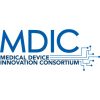In case you haven’t heard the news, FDA recently released its proposed rule for the new Quality Management System Regulation (QMSR).
What does this mean? The FDA is proposing an alignment of the current good manufacturing practice (cGMP) requirements of the FDA’s Quality System Regulation (QSR) with the international consensus standard for medical device quality management systems, ISO 13485:2016.
This is a major step toward harmonization, and there’s a lot to be excited about. With that being said, new changes mean new challenges. The following are a few things you need to know about FDA QSR and ISO 13485 Harmonization.
This is a good thing.
The FDA’s goal is to “remove unnecessary duplicative regulatory requirements and impediments to market access.” It makes sense. Due to the global presence of many medical device companies, a large part of the medical device world already complies with ISO 13485.
Why should “good quality” differ based on where you happen to be standing on the earth? ISO13485 is the state of the art when it comes to best practices for medical device Quality Management Systems, and aligning to a standard that much of the rest of the world is using will help medical device companies work more efficiently without sacrificing quality.
There will be new sections added to Part 820.
While most of the proposed rule removes items from Part 820 by referencing ISO 13485, the following new sections added to Part 820:
- Section 820.7 – Incorporation by reference
- Section 820.10 – Requirements for a quality management system
- Section 820.15 – Clarification of concepts
- Section 820.35 – Control of records
- Section 820.45 – Device labeling and packaging controls
Much of these additions are being put in place to ensure nothing is lost in translation with the incorporation by reference of ISO 13485. While all of these additions are important, some of the additions to pay especially close attention to are in Section 820.45. The FDA goes into greater detail for labeling and packaging due to the number of device recalls initiated each year due to these subjects. FDA was not satisfied with how ISO 13485 addresses the inspection of packaging and labeling, therefore Section 820.45 has been proposed as a way to ensure no quality is lost in the transition to ISO 13485:2016.
What does this mean for medical device manufacturers?
The FDA is proposing to give the industry one year to transition to the new QMSR once the ruling is finalized. During the FDA’s “Device Good Manufacturing Practice Advisory Committee Meeting” on March 2, 2022, however, industry representatives proposed to extend this transition period to two years.
During the given transition period, U.S.-only companies will need to become familiar with ISO 13485:2016. Based on the Preliminary Regulatory Impact Analysis for this proposed rule, the FDA estimated that there are approximately 4,445 companies that do not currently comply with ISO 13485. To those companies, this may feel like an unnecessary regulatory hoop to jump through. By harmonizing with how much of the world approaches the “one more thing to do” in your ever-increasing pile of regulatory requirements, the hidden benefit is that you will have cleared one of the major hurdles of manufacturing medical devices for a global market. It will be interesting to see how the changes may impact the global presence of the 4000+ U.S.-focused companies.
In addition to the Part 820 changes, the Quality System Inspection Technique (QSIT) that FDA uses to inspect medical device companies will be changing. The transition period mentioned earlier isn’t just for the medical device companies. It will also be for the inspectors who will now be inspecting to a different standard – the ISO 13485 standard. This may take some time, depending on how familiar FDA inspectors are with ISO 13485. FDA does not plan to issue ISO 13485 certifications, and ISO 13485 certification will not exempt a company from inspections. It will be interesting to see how the inspection techniques evolve, but what’s clear is that the techniques used inspecting medical device companies will be changing.
Remember, this is a proposed rule—things could still change as industry representatives weigh in on the topic. If you are interested in expressing your thoughts or concerns on the ruling, the FDA is permitting comments to the proposed QMSR rule until May 24, 2022. But as we all know, proposals lead to marriages. That said, it is worth it to start preparing your QMS now for the inevitable ISO13485 influence.
Technology changes, and with technological changes can come changes to regulations. If your goal is to not only develop a compliant medical device, but also to develop both a compliant and quality medical device, then these changes shouldn’t scare you. Instead, we should applaud the FDA for joining the march towards the global harmonization of medical device development.








